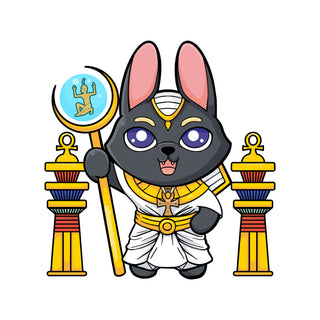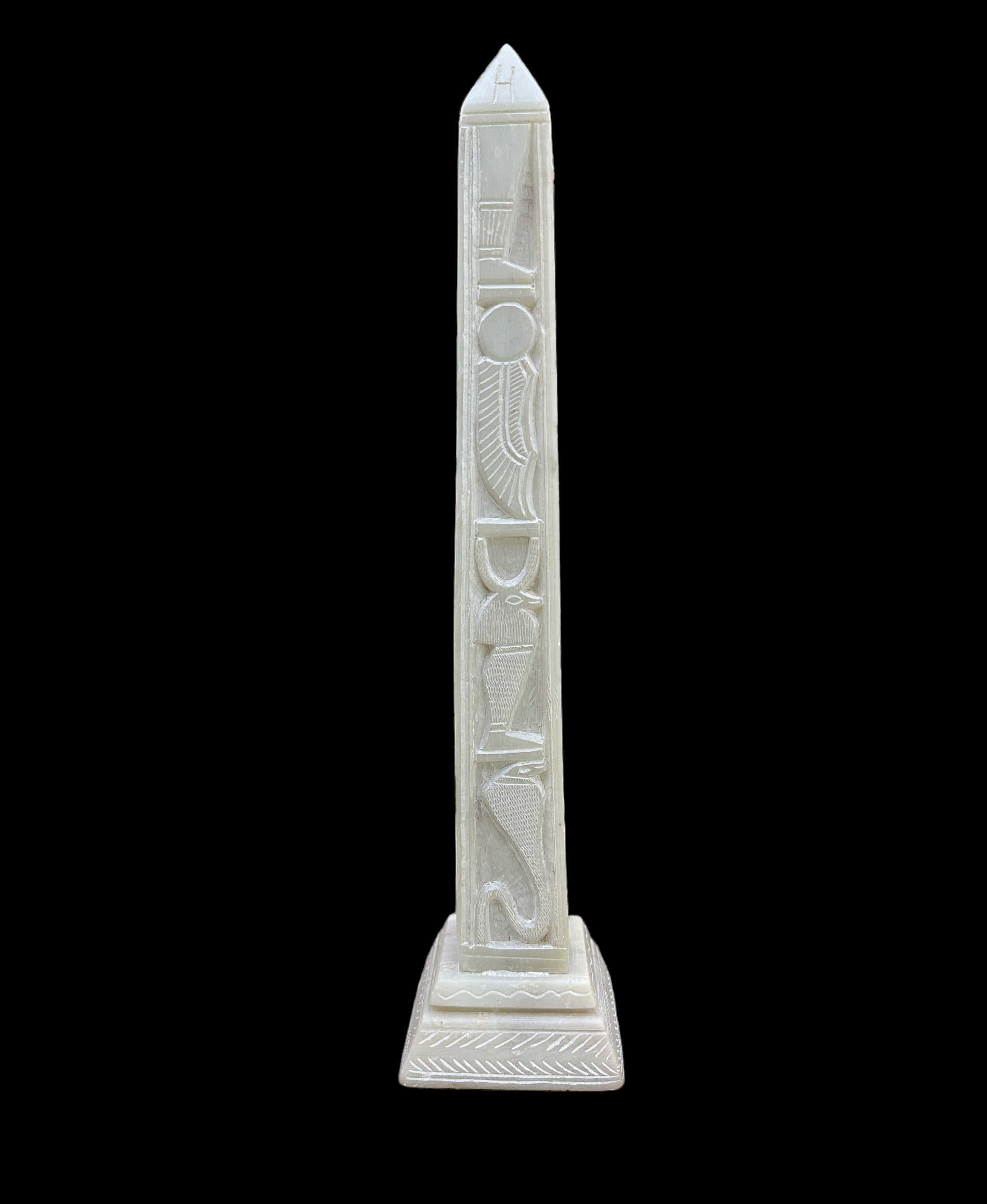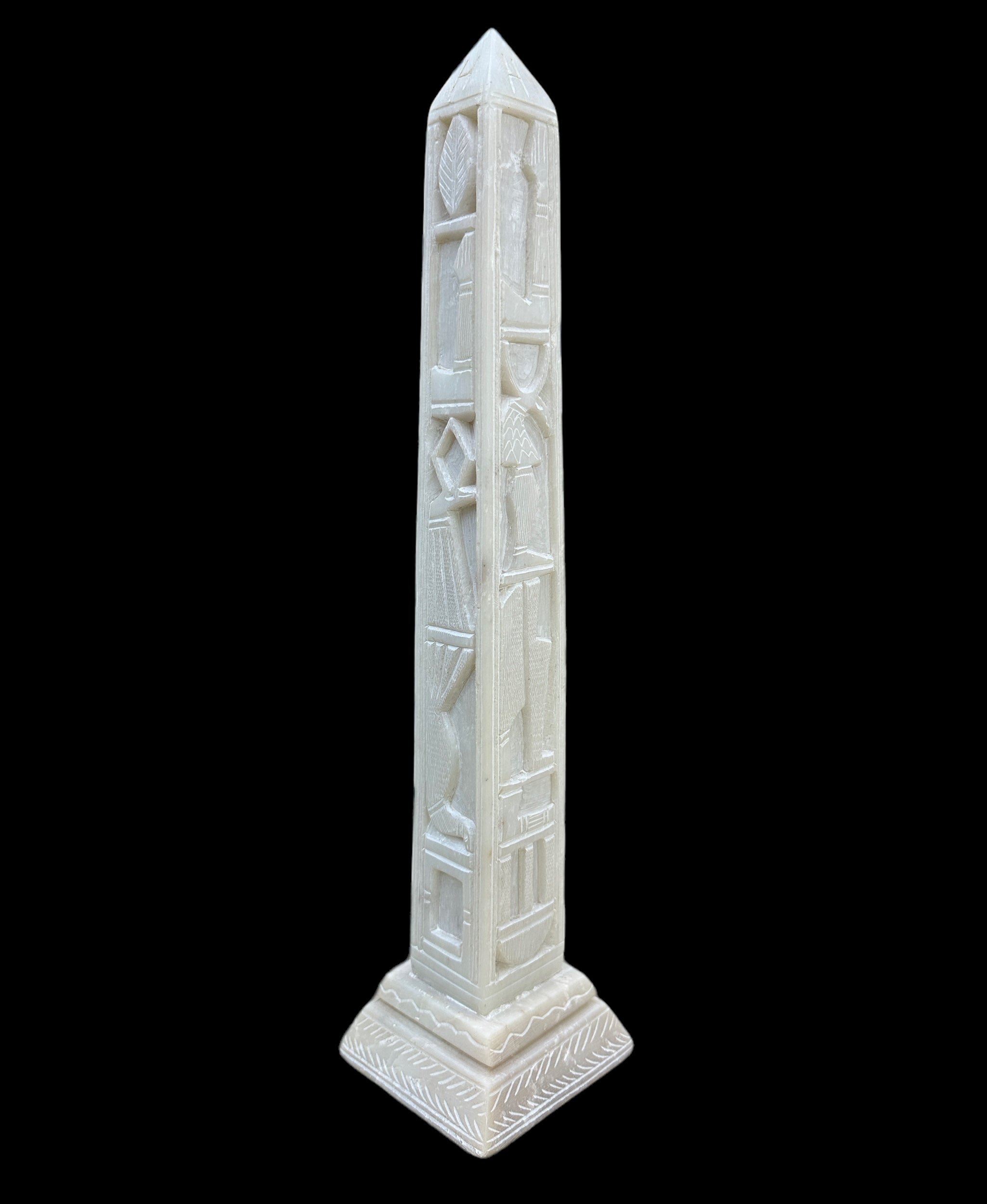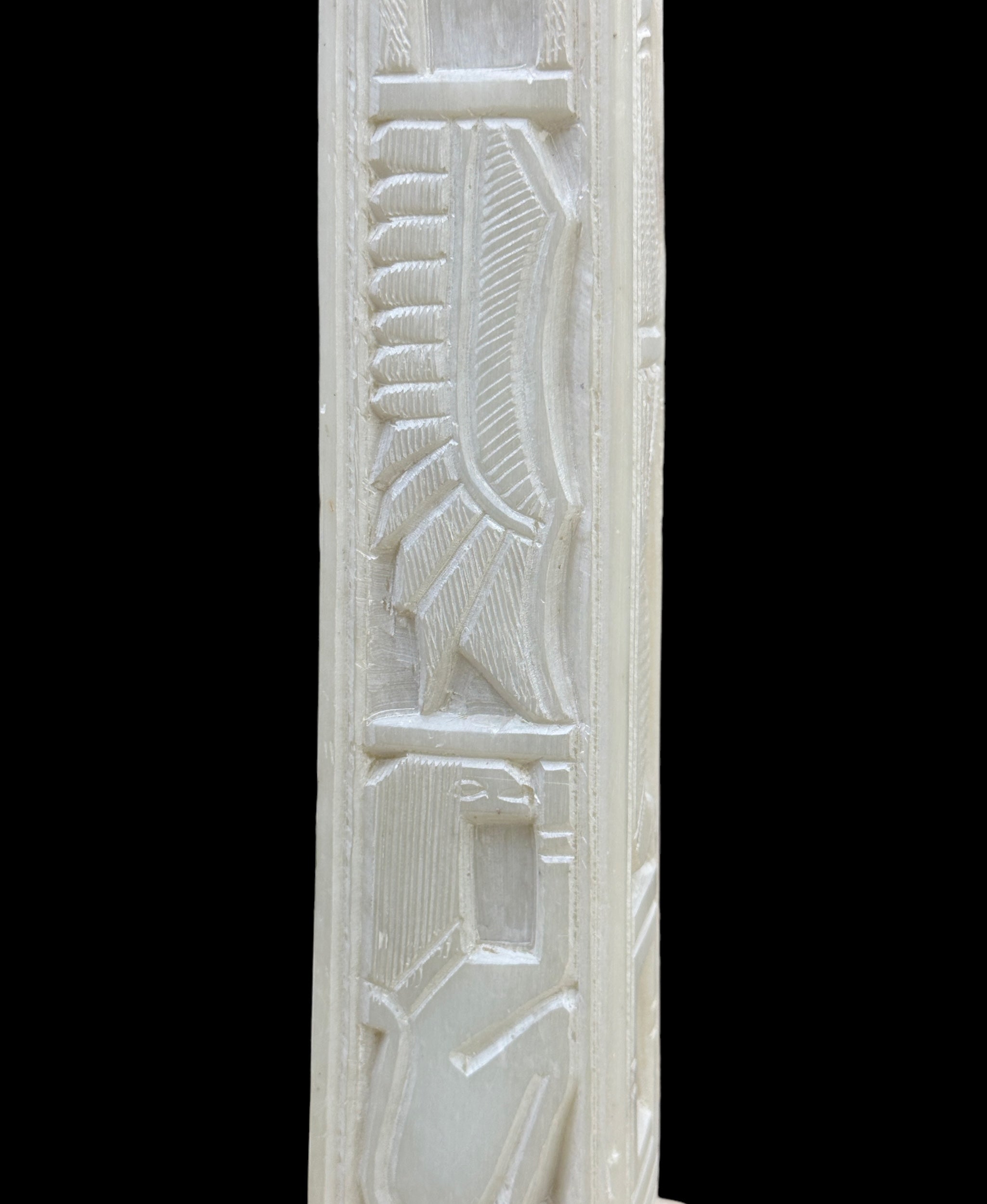Obelisks played a vital role in their religion and were prominent in the architecture of the ancient Egyptians, who placed them in pairs at the entrance of the temples. The word "obelisk" as used in English today is of Greek rather than Egyptian origin because Herodotus, the Greek traveler, was one of the first classical writers to describe the objects. A number of ancient Egyptian obelisks are known to have survived, plus the "Unfinished Obelisk" found partly hewn from its quarry at Aswan. These obelisks are now dispersed around the world, and fewer than half of them remain in Egypt.
The earliest temple obelisk still in its original position is the 68-foot (20.7 m) 120-metric-ton (130-short-ton) red granite Obelisk of Senusret I of the XIIth Dynasty at Al-Matariyyah in modern Heliopolis.
The obelisk symbolized the sun god Ra, and during the religious reformation of Akhenaten it was said to have been a petrified ray of the Aten, the sundisk. It was also thought that the god existed within the structure.
Benben was the mound that arose from the primordial waters Nu upon which the creator god Atum settled in the creation story of the Heliopolitan creation myth form of Ancient Egyptian religion. The Benben stone (also known as a pyramidion) is the top stone of the Egyptian pyramid. It is also related to the Obelisk.
It is hypothesized by New York University Egyptologist Patricia Blackwell Gary and Astronomy senior editor Richard Talcott that the shapes of the ancient Egyptian pyramid and obelisk were derived from natural phenomena associated with the sun (the sun-god Ra being the Egyptians' greatest deity). The pyramid and obelisk's significance have been previously overlooked, especially the astronomical phenomena connected with sunrise and sunset: the zodiacal light and sun pillars respectively.
Dimensions:
Height: 43cm / 17 inches







